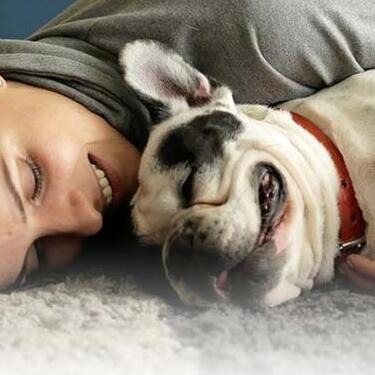
-
Find the right food for your pet
Take this quiz to see which food may be the best for your furry friend.
Find the right food for your pet
Take this quiz to see which food may be the best for your furry friend.
Featured products
 Adult 7+ Perfect Digestion Chicken, Whole Oats & Brown Rice Recipe Dog Food
Adult 7+ Perfect Digestion Chicken, Whole Oats & Brown Rice Recipe Dog FoodScience Diet's breakthrough nutrition supports ultimate digestive well-being & healthy microbiome for dogs age 7+
Shop Now Small & Mini Savory Stew with Chicken & Vegetables Dog Food
Small & Mini Savory Stew with Chicken & Vegetables Dog FoodA delicious complement to the nutrition of Science Diet Small & Mini 7+ dog food
Shop Now Adult Healthy Cuisine Roasted Chicken, Carrots & Spinach Stew Dog Food
Adult Healthy Cuisine Roasted Chicken, Carrots & Spinach Stew Dog FoodDelicious roasted chicken paired with tender vegetables in a succulent stew
Shop NowFeatured products
 Adult 7+ Senior Vitality Chicken & Vegetable Stew Cat Food
Adult 7+ Senior Vitality Chicken & Vegetable Stew Cat FoodImproves Everyday Ability to Get Up & Go
Shop Now Adult Savory Entrée Can Variety Pack Cat Food
Adult Savory Entrée Can Variety Pack Cat FoodPrecisely balanced nutrition with the delicious taste of savory minced chicken to help fuel the energy needs of cats during the prime of their life
Shop Now Adult 7+ Tender Tuna Dinner Cat Food
Adult 7+ Tender Tuna Dinner Cat FoodWith delicious chunks in a decadent gravy
Shop Now -
Dog
- Dog Tips & Articles
-
Health Category
- Weight
- Food & Environmental Sensitivities
- Urinary
- Digestive
- Joint
- Kidney
-
Life Stage
- Puppy Nutrition
- Adult Nutrition
- Senior Nutrition
Cat
- Cat Tips & Articles
-
Health Category
- Weight
- Skin & Food Sensitivities
- Urinary
- Digestive
- Kidney
-
Life Stage
- Kitten Nutrition
- Adult Nutrition
Featured articles
 Does My Pet Hate Me?
Does My Pet Hate Me?Learn tips for bonding with your pet if you've ever thought, 'My dog doesn't like me, or 'Why do I have a standoffish cat?'
Read More Why Are Dogs and Cats So Cute?
Why Are Dogs and Cats So Cute?If waggy puppy dog tails and furry kitten yawns make you swoon, you're not alone. Why are cats so cute? And, dogs too! Let's find out!
Read More Do Dogs and Cats have Belly Buttons?
Do Dogs and Cats have Belly Buttons?Learn whether cats & dogs have belly buttons like humans, what the function is, and if there are any health concerns associated with it.
Read More -


Pyloric stenosis in dogs, also known as pyloric hypertrophy (the enlargement of muscle of tissue) syndrome, is the narrowing of the portion of the stomach called the pylorus. The pylorus is the valve-like opening that lets food exit the stomach and enter the intestine (medically speaking, "stenosis" means "narrowing"). The pylorus is controlled by muscles that surround it and when those muscles thicken they cannot work properly. This results in the opening being completely or partially closed off not allowing for food to exit the stomach normally.
Causes: Why Does Canine Pyloric Stenosis Occur?
Pyloric stenosis in dogs may occur for a few different reasons.
The first of which may be congenital (meaning your dog can be born with it) selective thickening of the smooth muscle of the pylorus. Dogs are born with a form of canine PS and telltale signs normally appear sometime after weaning, and the transition to solid food, usually between four and 12 months old.
Another reason may be because of the gradual acquired thickening of the smooth muscle, the mucosal lining of the stomach — or a combination of the two. The cause of this form is unknown. Dogs with this form of canine pyloric stenosis are usually middle-aged or older when symptoms first appear.
Brachycephalic or short-nosed breeds, including Boston terriers, boxers and bulldogs are more prone to congenital pyloric stenosis. And small breed dogs including Lhasa apsos, shih tzus, Pekingeses and Malteses may be more at risk for acquired PS.
Signs of Pyloric Stenosis
The most common signs of pyloric stenosis in dogs observed by pet parents is chronic intermittent vomiting (the dynamic process where dogs use their stomach muscles to expel contents in the digestive tract that appear as digested), usually occurring several hours after eating. The vomiting may also be projectile in nature. In the congenital form of canine pyloric stenosis, vomiting starts after the dog is weaned and starts eating solid food. Other potential clinical signs associated with PS in dogs include:
- Regurgitation: a passive expulsion of contents in the digestive tract where the dog appears to burp up the contents do not appear to be digested.
- Decreased appetite
- Weight loss
- Dehydration
- Respiratory problems such as, aspiration pneumonia secondary to the vomiting. Aspiration is the result of something foreign being passed into the lungs or airways by accident — in this case, vomit, as a result can lead to an infection of the lungs or airways resulting in pneumonia.
These signs are related to the severity of the pyloric thickening and normally do not resolve with treatment of the symptoms with medication. If your dog is experiencing any of these, further evaluation by a veterinarian is recommended.


Tasty Tips
How Veterinarians Diagnose Pyloric Stenosis
Since there can be many potential underlying causes for chronic vomiting, diagnostic testing is necessary for further evaluation. Full blood work including a complete blood count (CBC), chemistry profile and urine sample evaluation as well as abdominal X-rays are normally required. In many cases, the blood and urine tests may be normal, or they could show mild dehydration or electrolyte (essential minerals needed for key body functions) abnormalities. However, even if the blood work is normal, it helps to rule out other causes of vomiting. X-rays of the abdomen may show a stomach that is distended with fluid if there is an obstruction of the pylorus. Chest X-rays should be done if there are any concurrent respiratory problems to evaluate for aspiration pneumonia or other abnormalities in the chest.
If there is concern for pyloric stenosis, additional abdominal X-rays taken after oral administration of a contrast medium called barium that helps the vet better examine the abdomen, are often performed. Delayed emptying of the stomach and narrowing of the pylorus may also strongly suggest a diagnosis of canine pyloric stenosis. If available, a live motion X-ray called a fluoroscopy or an abdominal ultrasound may be done to evaluate for pyloric stenosis prior to more invasive diagnostic tests.
If there is concern for canine pyloric stenosis, the use of a camera to look at the pylorus may be utilized. Biopsy samples of the pyloric tissue can also be obtained via endoscopy. Biopsies are important to rule out other causes for thickening of the pyloric tissue.
In some cases of pyloric stenosis in dogs, exploratory surgery is needed to obtain a diagnosis of canine pyloric stenosis.
A Tailored Course of Treatment
Treatment for pyloric stenosis in dogs typically involves surgery, as most cases result in obstruction of the stomach. A procedure called a pyloroplasty is the most common surgery performed, and it allows for removal of the thickened pyloric mucosal tissue and widening of the pylorus where food exits the stomach. In some cases of extensive disease of the pylorus, a more involved surgery in which the affected pylorus is removed may be necessary.
If there are no post-operative complications, the majority of dogs who have surgery for treatment of PS do well and are able to return to their normal lifestyle.


Jessica Seid is an emergency veterinarian practicing in the New England area. She is a graduate of the North Carolina State College of Veterinary Medicine and has been in the field for more than a decade. When she's not helping patients, she enjoys spending time with her husband, daughter and French bulldog.
Related products

Delicious braised beef paired with tender vegetables in a succulent stew

Science Diet's breakthrough nutrition supports ultimate digestive well-being & healthy microbiome for dogs age 7+

A delicious complement to the nutrition of Science Diet Small & Mini 7+ dog food

Delicious roasted chicken paired with tender vegetables in a succulent stew
Related articles

Your dog's coat and skin are a big part of your dog's overall health. Ensure you keep your dog's coat healthy, by following these simple tips.

Hill's Science Diet Small & Toy Breed dog foods are designed to meet the nutritional needs for your small dog at every life stage. Learn more here.

Large and giant breed puppies have different nutritional needs than other dogs. Learn how to provide the special care they need to grow up big and strong.

Learn about choosing the right food for your mature or older dog, ensuring he receives the correct balance of nutrition.

Put your dog on a diet without them knowing
Our low calorie formula helps you control your dog's weight. It's packed with high-quality protein for building lean muscles, and made with purposeful ingredients for a flavorful, nutritious meal. Clinically proven antioxidants, Vitamin C+E, help promote a healthy immune system.
Put your dog on a diet without them knowing
Our low calorie formula helps you control your dog's weight. It's packed with high-quality protein for building lean muscles, and made with purposeful ingredients for a flavorful, nutritious meal. Clinically proven antioxidants, Vitamin C+E, help promote a healthy immune system.

